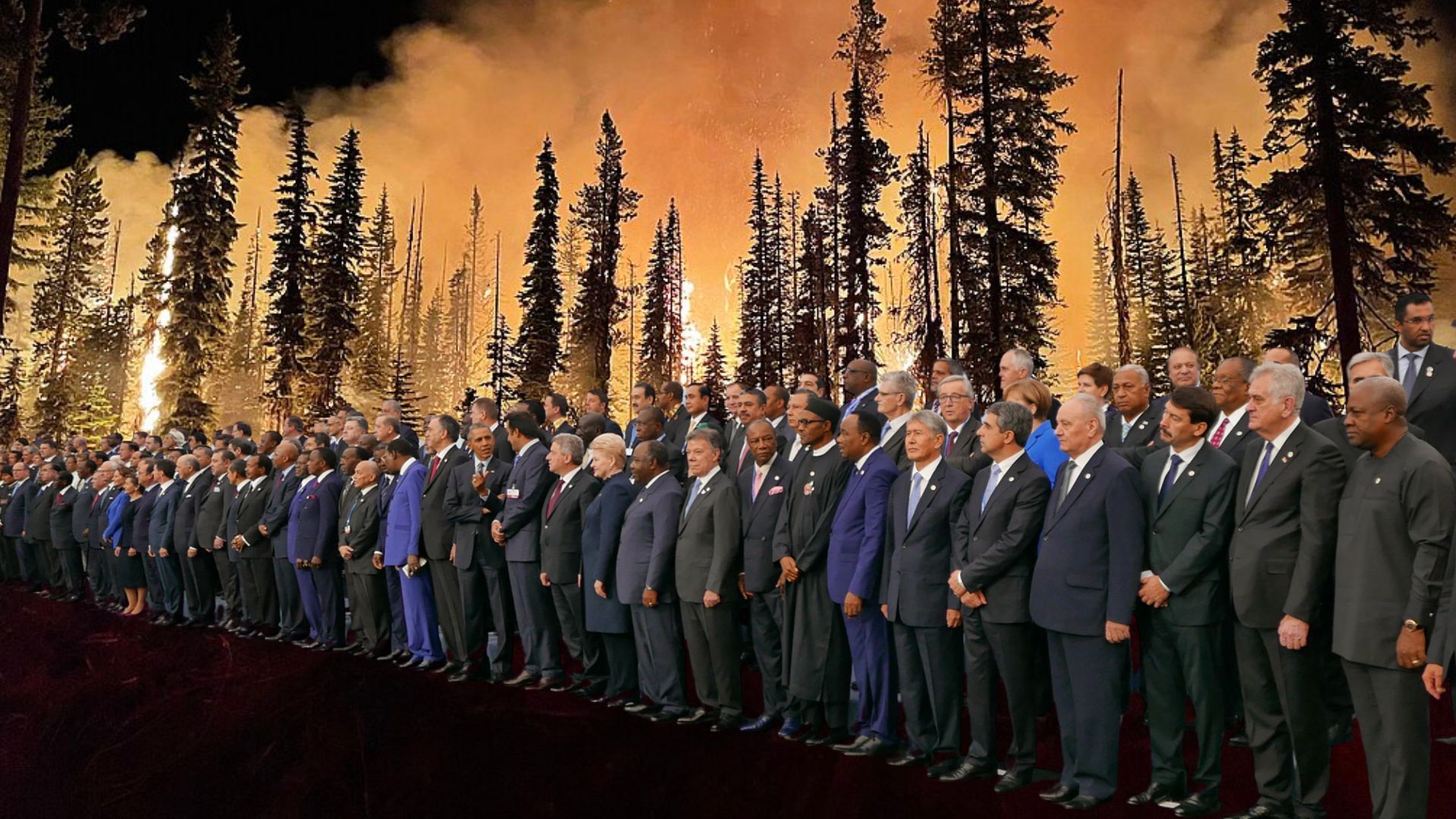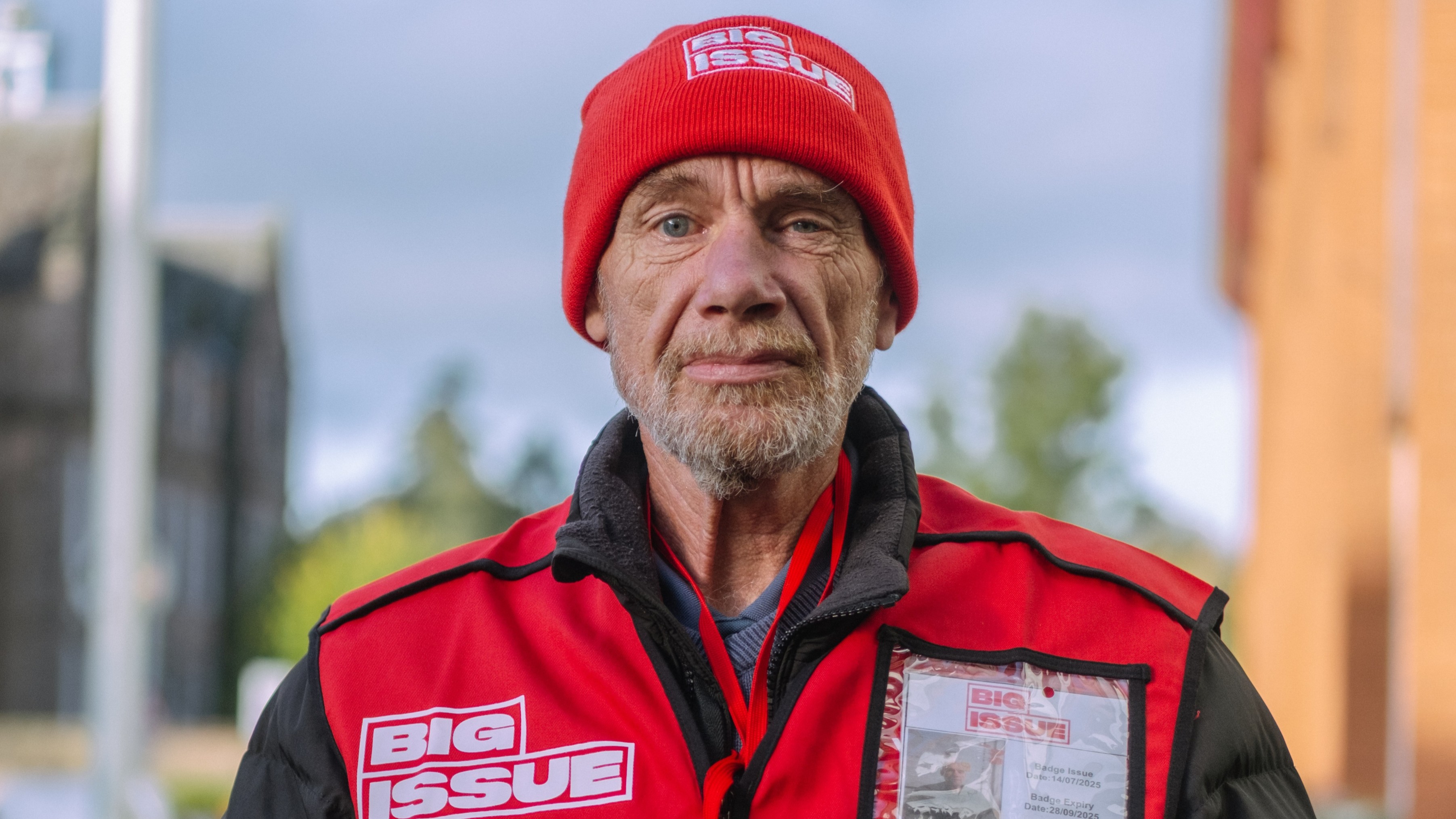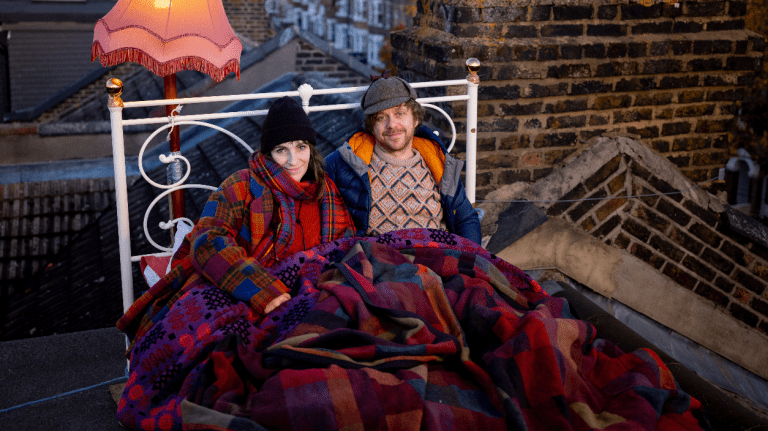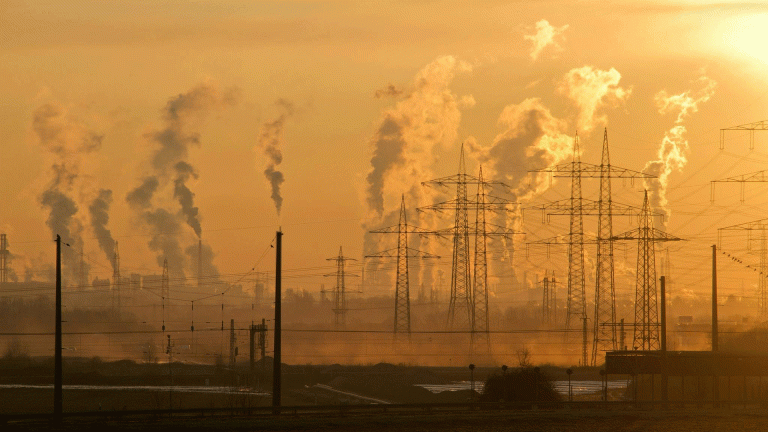The question now is: what went wrong, what went right – and what’s next? As world leaders prepare to meet at COP30 in Brazil, the stakes could not be higher.
“It’s very easy to be sceptical and cynical about COP,” says James Dyke, associate professor in earth system science at the University of Exeter. “And that is important. But there’s a Churchill quote about democracy – ‘democracy is the worst form of government, except for all the others’. The same could be said of COP. They’re utterly dysfunctional, riven with vested interests and built on corruption. But unfortunately they’re the best we’ve got on an international consensus level.”
Read more:
What is a COP?
COP stands for Conference of the Parties – the decision-making body of the UN Framework Convention on Climate Change (UNFCCC).
“There are a lot of acronyms,” explains Dyke. “But simply put, it’s an annual meeting where the international community convene to discuss mitigation efforts [for catastrophic global heating].”
Oxfam describes it as “the place where climate promises are made – or broken.”
Advertising helps fund Big Issue’s mission to end poverty
The Brazil COP will be the 30th set of talks since nations first met in Berlin in 1995. Despite three decades of effort, progress has been painfully slow.
It’s not easy to get sovereign states to agree to anything, explains Benoit Mayer, professor of climate Law at the University of Reading. “In principle the COP takes substantive decisions by consensus. This means that a decision cannot be adopted if any state actively objects to it. Yet states have very different interests, from oil-producing countries to low-lying small island developing states to developed countries.”
Saudi Arabia’s economy is based on crude oil, for example. It pushed hard against the 1.5C target at Paris – albeit unsuccessfully. But it isn’t only petrostates holding things up. The fossil fuel industry itself is deeply embedded in the process: at COP29, at least 1,773 fossil fuel lobbyists attended, outnumbering all the delegates from the ten most climate-vulnerable nations combined (1,033).
“It’s about power,” says Dyke. “The fraction of total energy supplied by fossil fuels in 2015 was 80%. People were incredibly naïve about how pernicious that power is. Today, 80% of all global energy is still satisfied by fossil fuels. Renewables have just added onto it.
“The turning off of that fossil fuel spigot has been difficult because of just the sheer amount of power producers, but then also, of course, the sheer amount of economic and political power it produces. Look at the United States – some of the most important contributors to Project 25 (a right-wing policy ‘wish list’ published before the election of Donald Trump) are fossil fuel industry.”
Why Paris (COP21) mattered
The Paris Agreement was a landmark because it created, for the first time, a shared global target – 1.5C – and a mechanism to reach it. Each nation was to submit “nationally determined contributions” (NDCs): individual plans to cut emissions.
Advertising helps fund Big Issue’s mission to end poverty
“There was this idea there’s going to be a kind of decentralised, market-driven, bottom-up approach in which governments would produce incentives for the markets, like feed-in tariffs (a government scheme to pay people who produce electricity through solar),” says Dyke. “And peer pressure and market forces would create these increasingly ambitious NDCs. At least, that was the idea.”
Before 2015, the world was on track for an estimated warming of around 3.7C to 4.8C. At 4C, much of the planet becomes unliveable. In Britain, an average of 634 people die per year from heat-related causes – this could rise to 34,000 at 4C, as once-a-century heatwaves become annual events.
Staple crops would fail across large parts of Africa, Asia and the Americas, while tropical coral reefs – nurseries for marine life and livelihoods for a billion people – would vanish almost entirely. Economies would struggle to adapt: according to an Australian study, 4C of warming could make the average person 40% poorer.
The World Bank has called a 4C world “catastrophic”. The Intergovernmental Panel on Climate Change (IPCC) warns that adaptation would, in many places, become impossible.
How much is the world on track to warm?
According to the Climate Action Tracker, current global policies are projected to result in about 2.5–2.7C of warming above pre-industrial levels by 2100. That reduction – from nearly 5C to under 3C – is, at least in part, a legacy of Paris.
“There remain the legal obligations,” says Benoit Mayer. “States must adopt nationally determined contributions representing their highest possible ambition and a progression over time, and they must implement the objectives of these contributions. Most states, especially high emitters, are complying with these obligations, and they are effective, even if they may not be enough.”
Advertising helps fund Big Issue’s mission to end poverty
But we are still in trouble. The IPCC warns that warming above roughly 2.5C shifts the risk of “large-scale singular events” – tipping points such as ice-sheet collapse or major biome loss – from moderate to high.
The Paris legacy has been undermined by non-compliance. Fewer than a third of the world’s nations (62 out of 197) have submitted updated NDCs. The US under Donald Trump abandoned the process; Europe has promised but so far has failed to deliver.
Another area where talk has been undermined by inaction is ‘loss and damage’. ‘Loss and damage’ refer to the harms caused by climate change, from devastating floods and storms to heatwaves and crop failures. The idea is that big polluters should establish a fund to help vulnerable countries pay for the effects of climate change.
Take Bangladesh. The country is a very minor contributor to global greenhouse gas emissions, responsible for approximately 0.47% of the total – but is increasingly hit by devastating climate change-induced floods.
COP has partially succeeded by formally recognising the issue and establishing mechanisms to support affected countries. At last year’s COP29, nations agreed a new climate finance goal, agreeing a target of “at least £300 billion” per year.
Yet progress has been painfully slow: funding remains tiny compared with the scale of the problem (estimates for the need for the climate finance tally exceed £1 trillion), and bureaucratic complexity often stalls action. As Dr Nandan Mukherjee puts it, “We are just complicating the administrative structure… instead of finding the right spot where every party will agree.”
Advertising helps fund Big Issue’s mission to end poverty
Countries had previously promised to mobilise £100bn per year for climate finance by 2020 – a total that got nowhere.
Dr Mukherjee, who has been involved in loss-and-damage talks since 2012, is not optimistic about COP in the face of the global fossil fuel interests. Nonetheless, he maintains hope about the future.
“We have been negotiating for 30 years now but the reality is that the root cause of climate change… is not going down, it’s going up,” he said.
“But when the COP is failing us… people will find their own solution. Local farmers are designing their own adaptation options, because they are clearly seeing that the science or the white papers are not helping their lives.”
Mukherjee’s faith lies in grassroots solutions – from climate-resilient homes in Bangladesh to local adaptation projects around the world.
What is at stake at COP30
At COP30 in Belém, Brazil, implementation of previous agreements – including Paris – will be on the table.
Advertising helps fund Big Issue’s mission to end poverty
“A good outcome,” says Mayer, “would be the communication of more ambitious nationally determined contributions by many parties. All parties have to communicate a new target by the end of the year, which will apply to 2035… States may be more willing to increase their own ambition if others do so as well.”
Beyond new emissions targets, negotiators will debate how to turn climate justice into policy – from a strengthened Loss and Damage Fund, to debt relief for vulnerable nations, and a proposed $1.3tn-a-year climate finance package to help developing countries adapt and decarbonise.
“If you just look into loss and damage fund, they have right now got 600 or 700 million, not billion,” notes Mukherjee. “So, I’m not optimistic that we get to where we need to.”
Nonetheless, the mechanism matters. “There needs to be an understanding that we have not limited warming to 1.5C,” adds Dyke, “and if there’s any notion of justice within the UNFCCC, then there has to be some kind of reparations – people need to pay for the cleanup, to put nations back on their feet when very bad things happen.”
Echoing Mukherjee, he adds that important climate action will continue outside of the halls of COP.
“Where the optimism is, I think, is that that (COP) is just not the only way that we respond to climate change, and that we are responding to climate change. So when you look at, you know, the Coalition of climate cities, climate mayors, when you look at sustainability initiatives that happen at the community level, NGOs, charities – when you look at that collectively, I think it’s credible to say that the effort to avoid dangerous climate change is probably the largest mass movement in all of human history.”
Advertising helps fund Big Issue’s mission to end poverty
Do you have a story to tell or opinions to share about this? Get in touch and tell us more.
Change a vendor’s life this Christmas.
Buy from your local Big Issue vendor every week – or support online with a vendor support kit or a subscription – and help people work their way out of poverty with dignity.





